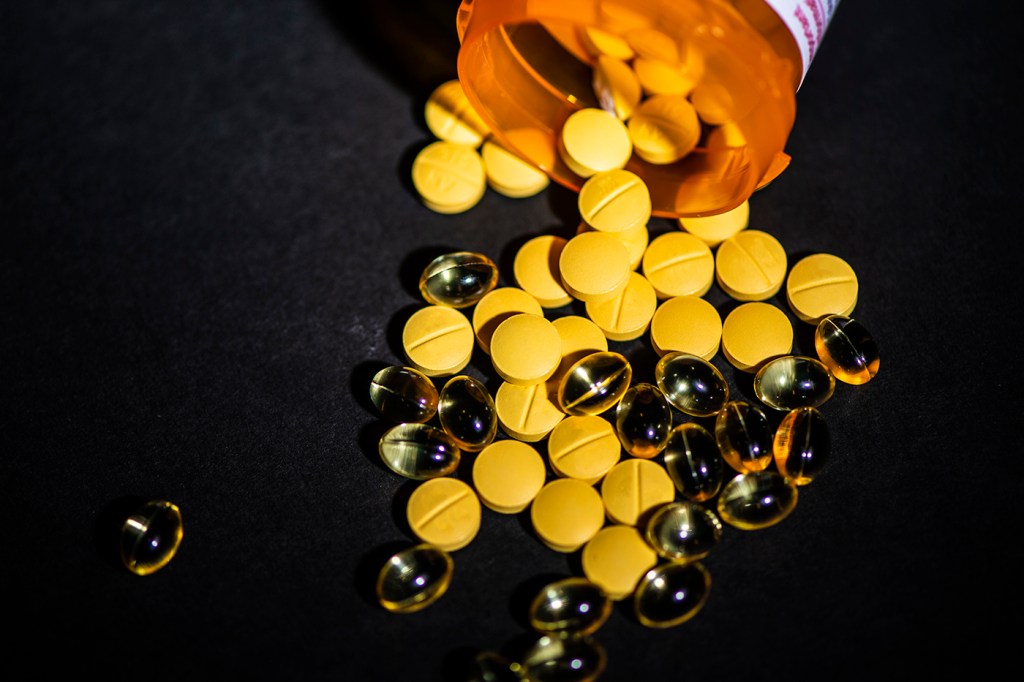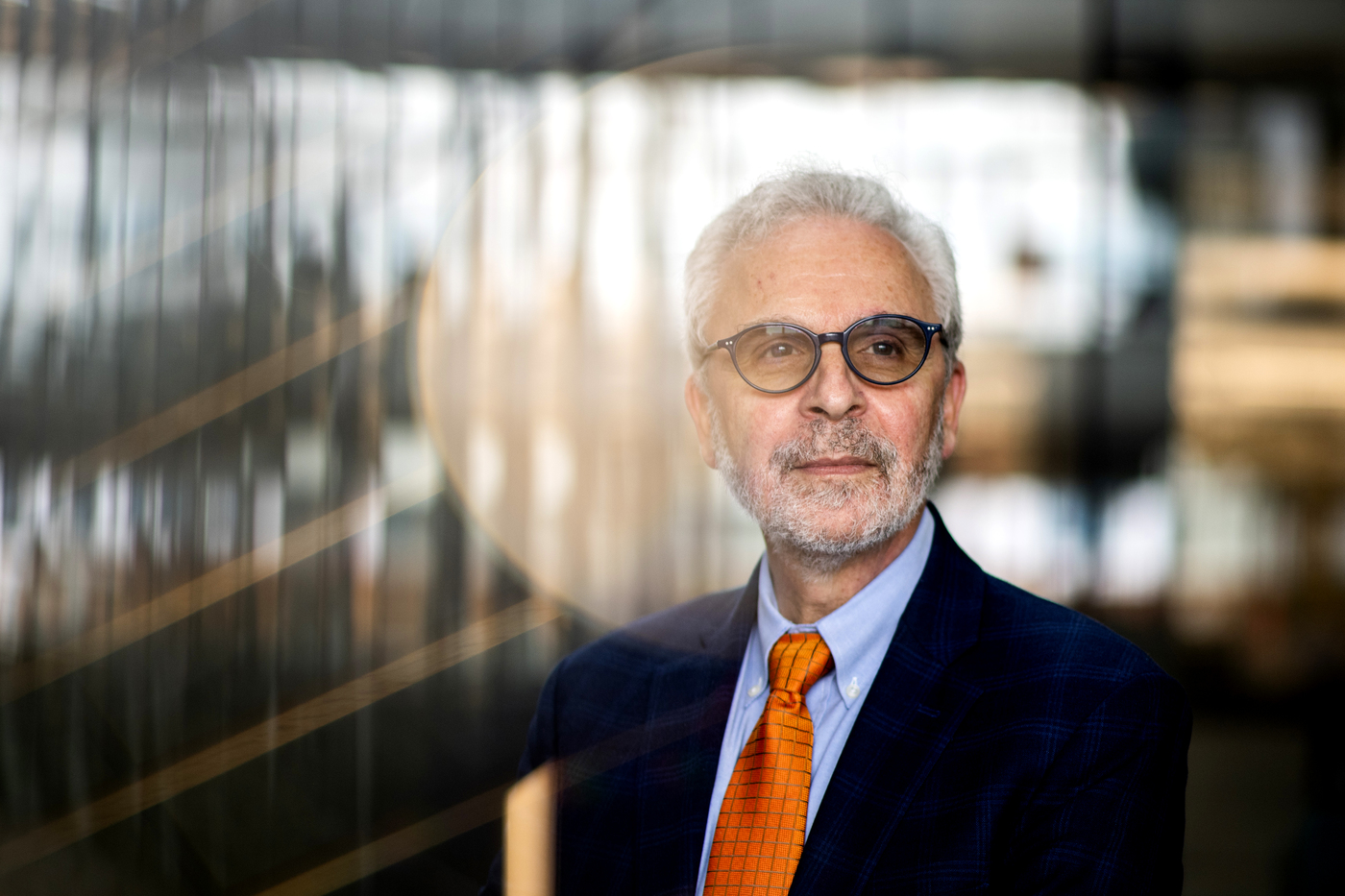Northeastern leads $1M study to disrupt illegal medications trade with the power of AI

Northeastern University professor Nikos Passas and his colleagues from two other universities have secured $1 million from the National Science Foundation to research the illegal medical products trade and develop tools that would help disrupt it.
Illegal medical products trade causes deaths of hundreds of thousands people, undermines competition and the rule of law, damages companies’ brands, causes economic losses and security threats, and corrupts financial systems, says Passas, professor of criminology and criminal justice and co-director of Institute for Security and Public Policy at Northeastern.
For the next four years, Passas will lead a multidisciplinary team of four scientists that also includes Northeastern professor Ravi Sundaram. They hope to first gain a better understanding of the problem and then develop various tools to disrupt the flow of illegal medical products.

“We have been able to put together good partnerships with international organizations, NGOs [nongovernmental organizations] and universities,” Passas says. “They had requested us to leverage our global reach to not simply stay within North America, but go global.”
There are different types of misconduct that involve illegal medical products, he says. Substandard and falsified medical products constitute the biggest and most straightforward category identified by the national and international agencies.
Falsified, inauthentic medicines and medical supplies are intentionally manufactured out of the wrong ingredients. They might miss active ingredients or contain toxic or other substances that can cause harm.
Substandard products are potentially legally manufactured, Passas says, but they might be unlicensed or not registered with the authorities or otherwise lack supervision.
“Things can be made in a factory in South Asia, for example, and it is an authorized facility,” he explains. “But in order for them to come to the United States and be distributed they need to be vetted by the FDA [U.S. Food and Drug Administration] and get the approvals.”
Sometimes medical products get diverted from their original declared destination, for example, when cargo gets stolen, and ends up illegally on formal or informal markets.
Packaging can also be used to disguise illegal medication. Counterfeit packaging might be easier to spot, but fakes can also come in original packaging or vials.
Price gouging, when a seller sets the price of something sky high due to short supply and high demand, is another form of misconduct that the scientists are interested in, Passas says, because it limits access to necessary medication.
“We care about all of these things, and we want to assist authorities and companies with their identification of problem areas, and also with effective intervention and disruption opportunities,” Passas says. “And when these do not succeed fully, we want to also assist with the mitigation of the effects that these have.”
Illegal medical products are not only bad for consumers’ health, but can pose a geopolitical and national threat if they are used to fund extremist groups and terrorism or are sold by groups that have been sanctioned by the UN or specific countries. Such scenarios might produce additional victimization, Passas says.
The size of the illegal medical products market is largely unknown, he says, because manufacturers don’t like to share that their product has been compromised in order to preserve their market share. In 2016, the Organisation for Economic Co-operation and Development estimated the volume of the international trade in counterfeit pharmaceuticals at $4.4 billion.
Some consumers don’t know that they are buying fake or otherwise illegal medical products, especially online, Passas says.
“For the most part, they are simply trying to find something that is not otherwise accessible or it is too expensive,” he says.
But if the deal appears too good to be true, a consumer might be actually getting a bad deal, he says—they will either remain untreated, get sick or even die. Deadly opioids laced with fentanyl are a prominent example of this problem, Passas says.
Sometimes people seek medication that they know is illegal, for example, athletes procuring steroids. In some countries, it is illegal to sell and buy medications online in general, Passas says.
“By definition, if you go online to buy your medication in those jurisdictions, you know it’s illegal,” he says.
So far, the researchers have noticed that geography matters—different kinds of illegal medical products and different kinds of victimization dominate certain regions. In the global north and in the member countries of the OECD, there are more problems with quality-of-life medications and with oncology products, Passas says, which are very expensive.
“Even a few sales a year can bring in a fortune,” he says.
In low-income countries, there are fewer online sales and many more problems with lower-cost medication, antimalarials, for example, both in brick-and-mortar pharmacies as well as in street markets.
“By some estimates, 60% of all the majority of the drugs made available in some African countries are problematic,” Passas says. “They’re either fake or substandard. And that has huge implications for the public health, for the quality of life, for the economy, for the development of these countries.”
It is not always the same kind of bad actors either, Passas says. Sometimes there are gangs involved. In other areas, legitimate operators might go on the bent at some point because of financial trouble, or there might be a partnership between legal and illegal actors.
In their preliminary research financed by a $250,000 grant, the scientists focused on illegal online sales of medical products.
“The overwhelming majority of online pharmacies are illegal. There are thousands and thousands of them that get shut down every year,” Passas says.
The problem is that the law enforcement doesn’t know who is behind these pharmacies, he says, and they can resurface easily under a different name.
Using the data provided by one of the large pharmaceutical companies and AI, the researchers were able to visualize information scraped online to see clusters of online sellers and find connections between different players. Thus, the software allows to see that seemingly unconnected cases may have the same players in the background and then they can be potentially identified, Passas says.
The findings of this study will be additionally used for creating educational and training programs. Passas will lead the first Dialogue of Civilizations titled “Illegal medical product trade, social entrepreneurship and public health” in Paris, France, already this spring. He is planning on setting up co-ops and other opportunities related to this topic for students as well.
He also believes that this research and tools created as a result of it will benefit any commodities that go into a supply chain that has security and protection issues.
“We are open for additional collaborations for things where we can be of help in a similar way,” Passas says.
Alena Kuzub is a Northeastern Global News reporter. Email her at a.kuzub@northeastern.edu. Follow her on Twitter @AlenaKuzub.






